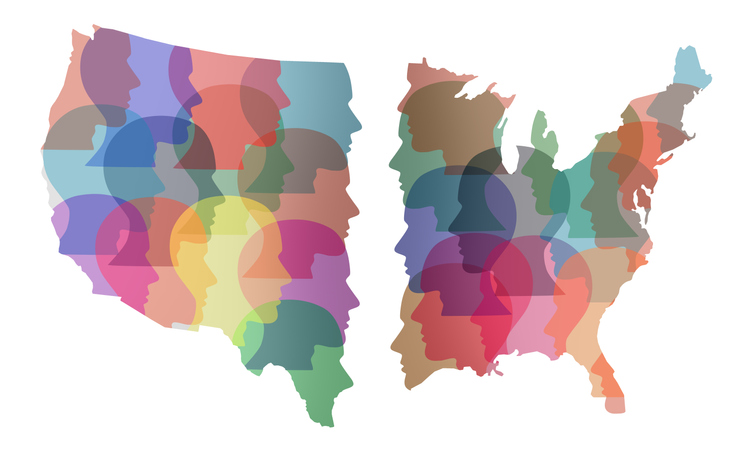A new Stigler Center working paper looks into the effects of referendums and public initiatives on public policy and finds that direct democracy better represents the will of the majority, and therefore might also be better able to counteract the power of special interests over policymaking.

The rise of anti-establishment populist movements in the U.S. and Europe is one of the most remarkable political developments of the last few years. Within the span of a few months in 2016, the United Kingdom voted to exit the European Union and Americans elected Donald Trump as president, two outcomes that shocked intellectual and political elites.
The global populist rebellion seems to have slowed down a notch in recent months, as far-right candidates Marine Le Pen and Geert Wilders lost elections in France and in the Netherlands, respectively, but the ascent of populist politics nevertheless revealed the extent of voters’ discontent with the status quo and led some scholars to refer to it as a symptom of a crisis of Western liberal democracy.
Much of this has to do with the outsized influence of special interests. In the U.S., the widespread sense that the economic and political systems are “rigged” was a major contributor to the rise of Trump, who repeatedly lambasted the influence of special interests on American politics and vowed to “drain the swamp” in Washington, D.C.
But long before Trump, Americans were already losing trust in democratic institutions. According to a Gallup poll from June of last year, Americans’ confidence in institutions is near historical lows at 32 percent, with Congress’s approval rating at an abysmal 9 percent. In a conversation with Stigler Center Director Luigi Zingales in March, Judge Richard Posner described members of Congress as “slave[s] to the donors” and said that “[T]he real corruption is the ownership of Congress by the rich.” In a recent interview with ProMarket, Stanford professor Anat Admati listed “political engagement by corporations, including lobbying, campaign contributions, and other tactics that can create confusion and cause policymakers to yield to narrow interests,” as one of the major contributors to public discontent, along with the failure of governments to address inequality and concentration.
As scholars, politicians, and thinkers seek ways to restore public trust, a new Stigler Center working paper points to a possible remedy: more direct democracy.

The paper, written by John G. Matsusaka of the University of Southern California, surveys the extensive literature regarding the effects of referendums and public initiatives on public policy and draws two main conclusions: 1. Contrary to the persistent notion that referendums and other forms of direct democracy lead to chaos, voters actually tend to make reasonable, even conservative choices, especially when it comes to issues like government spending or borrowing; 2. Direct democracy better represents the will of the majority and therefore might also be better able to counteract the power of special interests over policymaking.
How does direct democracy affect policymaking?
Direct democracy, as a form of government in which citizens are directly involved in lawmaking instead of delegating it to representatives, goes back at least to ancient Greece. In America, policy decisions were made through town hall meetings since before the founding of the republic, and in Switzerland it has been an essential part of political life since the mid-nineteenth century. In his paper, Matsusaka focuses on the U.S. and Switzerland—the two countries in which direct democracy is most active—and on two forms of direct democracy: referendums, in which citizens vote on policies proposed by government officials; and initiatives, where citizens vote on policies proposed by citizens.
Referendums can be divided into three types: mandatory (a government proposal is required by law to be the subject of a referendum before it goes into effect), petition referendum (a vote on a government proposal that is the result of a citizen petition), and advisory (a referendum that is called at the request of the government, and whose results are not binding in a formal sense, e.g. Brexit). An initiative is a vote that also relies on petitions, but in which citizens vote on policies proposed by the citizens themselves.
In recent years, as governments around the world have struggled with claims that they are overly influenced by special interests, referendums and initiatives have become increasingly popular. Between 2000 and 2010, 298 national referendums were held across the world, with 44 of those taking place in the U.S. and 167 in Europe. All but one of the 50 U.S. states have some form of direct democracy, notes Matsusaka: 30 states require voter approval on debt issues, 49 states require voter approval on constitutional amendments, 23 states allow petition referendums, and 24 states allow initiatives. In November 2016 alone, more than 150 measures appeared in 35 states, as citizens were asked to vote on policies regarding medical marijuana, gun control, health care, minimum wage, and others.
In attempting to estimate the effect of initiatives and referendums on public policy, Matsusaka reviewed numerous theoretical and empirical studies on the connection between initiatives and referendums and policy outcomes. Often, he notes, there is a tendency to describe the findings in the literature as “mixed” or “conflicting” (a characterization he somewhat disagrees with)—and yet, he notes, “some conclusions have been replicated so consistently that it seems safe to treat them as robust patterns.”
One of those patterns is that when voting on specific policies, whether fiscal or social, voters tend to be more conservative than their elected representatives. The evidence, notes Matsusaka, shows that mandatory referendums on new borrowing or spending result in significantly lower levels of both—8 percent lower spending, according to median estimates. “If voter approval is required for spending or debt increases, it is likely that spending and debt will be lower on average,” he writes.
This, he notes, suggests that representative governments tend to spend and borrow more than voters prefer, although he points out that this applies only to recent decades. In the early twentieth century, he writes, the opposite was the case.
The finding that referendums and initiatives tend to lead to more measured fiscal policies is important, because despite its increasing popularity, some still question the viability of direct democracy, arguing that voters are too uninformed, emotional, and susceptible to make decisions regarding specific policies, and that policymaking should remain exclusively in the hands of experts. In the case of Brexit, for instance, the decision by British voters to leave the EU was followed by an instant, widespread rebuke of “irrational,” “ignorant” voters who chose to ignore expert opinions for emotional reasons, to their own detriment.
Another curious finding is that while initiative American states and Swiss cantons have supported lower spending in the last 50 years, initiatives have also driven up spending in cities. This, Matsusaka argues, indicates that officials at the state (and canton) level tend to spend more than voters would like, whereas on the local level politicians tend to spend less than voters would like.
“Sometimes people criticize direct democracy and say that it would lead to anarchy and chaos. The evidence shows that that it absolutely doesn’t do that. There are different outcomes, and you might not like the outcomes, but they’re all reasonable possibilities,” says Matsusaka, the Charles F. Sexton Chair in American Enterprise in the the Marshall School of Business, Gould School of Law, and Department of Political Science at USC. “If people have to approve debt issues, we tend to see less debt issued overall—it’s not like people are irrational and borrow like crazy or entirely choke off borrowing. They are reasonable.”
Can direct democracy be used to fix democracy?
Another pattern that Matsusaka identifies is that direct democracy leads to more policies that reflect the views of the majority of the population. The question of whether direct democracy makes policy more congruent with citizen preferences, explains Matsusaka, is central to the literature on the subject, with the debate often divided between two opposing views. On the one hand, there is the “progressive” view, which argues that referendums and initiatives make democracy more responsive to the will of the people. On the other hand, there is the “special interest” view, which argues that direct democracy enhances the influences of special interests, because they have the resources and incentives to dominate elections and ballot measures.
Despite the importance of this debate, he notes, convincing evidence is limited. The existing evidence, however, finds that direct democracy states are indeed more likely to adopt policies favored by a majority of citizens. He quotes from his own 2010 study, which found that in direct democracy states, congruence with majority opinion was 18-19 percent higher than in states without direct democracy. This, he says, is consistent with the view that initiatives allow citizens to counteract the influence of special interests on policies.
Direct democracy, he adds, might be better equipped to withstand the influence of special interests. “You might be able buy legislators, you can give them deals or make arrangements with them. But you can’t make arrangements with 10 or 20 million voters. The most you can do is pour a lot of money into running commercials and try to persuade them, but you can’t corrupt them.You can try to trick and deceive them, but there are limits to how far that can go. If you look at big businesses, most of them don’t like direct democracy. They’d much rather be able work things out with legislators.”
The paper, he says, shows that direct democracy “leads to more majoritarian outcomes. My own personal view is that in a democracy, that’s a good thing. Not in every single case, but in most cases it’s a good thing.”
This, he acknowledges, presents some normative questions which the relevant literature has hardly confronted so far. Democracies often have safeguards in place to limit the ability of the majority to enact certain policies, for instance policies that might discriminate against or otherwise harm minority groups. Initiatives and referendums, he notes, might achieve majoritarian outcomes by overriding these safeguards. “It’s important to keep some the safeguards, like vigilant courts, in place to protect minority rights,” Matsusaka adds.
Despite the criticisms by political elites, however, Matsusaka argues that among voters direct democracy is “tremendously popular.” “There are a lot of surveys in which ordinary citizens were asked who they trust to make decisions, and those surveys routinely show that ordinary citizens trust the people over politicians by a 3-to-1 ratio. It’s always been unpopular with the elites, in my opinion partly because it takes away from their power. But arguments that are made against direct democracy, for instance that people are not informed enough or that turnout is low, are also true when people go to vote for their elected officials. These are really arguments against democracy itself, not direct democracy.”
This week, Matsusaka will visit the Stigler Center for a series of three stand-alone, interrelated lunch seminars that focus on whether direct democracy can be used to fix democracy and counteract the influence of populism. The example he points to is that of the American Progressives of the early twentieth century, like Theodore Roosevelt, who saw initiatives and referendums as a way to make government more responsive.
“People feel they’ve lost control, that someone else has gotten control of the government. Back in the early 20th century, we had a big populist movement. What did they do? They passed the 17th Amendment, which created the direct election of U.S. senators. They passed universal women’s suffrage. They created primary elections so the party’s nominees are chosen by the voters, not by political bosses in smoky back rooms. States also adopted direct democracy in this period as well. In the U.S., the system responded by giving people more control, and that’s what got us over that period, that we made our system more democratic. Direct democracy is a natural way to go when ordinary citizens start to feel it isn’t their government any more.”






